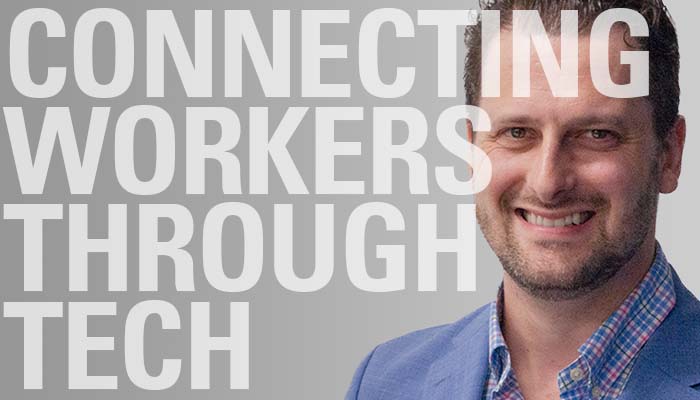The evolution of the modern office needs to accommodate team members meeting in person and online. ESD now Stantec Senior Audio Visual Consultant John Doyle offers an overview of the best technology to consider. (Learn more about the meeting room technology.)
As workplace technology integration strategies accelerate, people remoting and officing will impact real estate decisions in the years ahead.
Within two weeks, our nation’s largest cities exchanged business as usual for involuntary remote working where possible. Even if a company wasn’t 100% prepared with the ability to work productively while working remotely, their workers adapted quickly. Furthermore, the extended period of stay-at-home governance has prompted many questions about conventional real estate fundamentals:
- Does work have to be completed in an office?
- Does learning have to take place in a school?
- Does working out have to take place at a health club?
Our clients and industry partners are telling us there are a lot of questions arising about the true need for office space programmed on a space-per-person basis and being able to fit every person in an office. For example, an article recently published in Crain’s Chicago Business shared the following: “For most companies, being in the office or being remote is not an either/or—it can be a blend, and for most companies it is,” says CoreNet Global Senior Vice President Tim Venable. “There’s just going to be more remote working in the future than there has been in the past.” Additional feedback touches on density of people within a workplace for certain functions as well as how to maintain physical distancing for health within collaborative environments.
As illustrated above, changes to the workplace is on the minds of our industry partners and clients. The good news is many of the strategies our clients have implemented to foster a sense of place will still be important:
- Branded environments – Creates space for belonging
- Amenity/collaboration spaces – Creates space for connecting
- Conference/huddle rooms – Creates space for collaborative focus
- Workstations – Creates space for individual focus
- Offices – Creates space for privacy
All these spaces have evolved over the past decade with the goal of creating a workplace where people want to be. Even though there has been a lot of attention focused on how many more people will work from home, post-pandemic, workplace will still be the hub for connecting and fostering bonds among a company’s workforce. And many of the technologies deployed within an office to foster productivity will play a larger role in employee engagement and enabling connections among a company’s hybrid workforce!
It is great that we have the capability to use technology to work virtually and remotely; however, there are opportunities to explore and integrate technology infrastructure to foster connections between an officing and remoting workforce who will have more choices when it comes to where they want to work and how they can be most productive.
Here are four workplace technology trends that are accelerating the bridge between officing and remoting:
- Digital Collaboration: Bridge the physical-digital gap between virtual and office employees leveraging cloud-based solutions to operate no matter the location…in conference rooms, offices, desks, at home or on the road – seamlessly and ubiquitously.
- Frictionless Access: Getting through a building with the least amount of physical barriers and interactions – safely and securely.
- Mobility: In-building wireless systems whether WLAN, CBRS, 5G, or others, providing pervasive and robust connectivity throughout the office and building property will foster user and space flexibility without jeopardizing productivity.
- Space Optimization: Efficient space utilization, navigation, and reservation. Most people will go into the office for a purpose. It may be an internal meeting, a client meeting, or training… Depending on the purpose, intelligent building technologies can efficiently identify the most productive location for you to office between your meetings while helping operators better track and manage their properties.
Looking forward, an industry peer recently shared a thoughtful statement within a post on LinkedIn we believe captures the essence of how important a physical workplace will be, even though it will change: “…We need to be with one another, whether it is to work together, talk together or to simply break bread…”
Even though technologies have been imagined to create a deeper personal virtual connection, such as virtual touch and virtual smell, these do not replace the human need to be with one another.
Let’s continue the discussion about technology integration in the workplace of now and in the future! Private Message Julie Lardenoit, Workplace Solutions Practice Leader, or Private Message Mo Fahim, Intelligent Building Techinologies Practice Leader, on LinkedIn.




